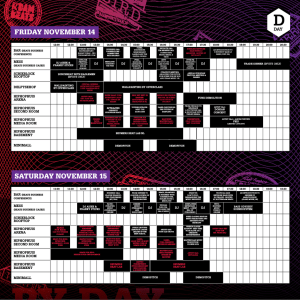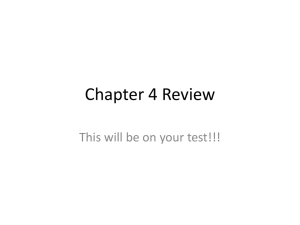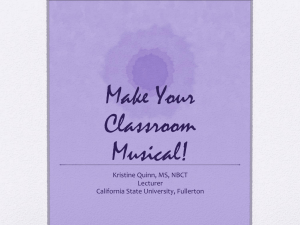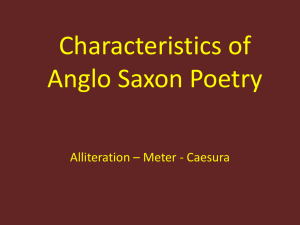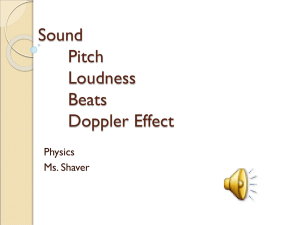MUSIC APPRECIATION UNIT 2
advertisement
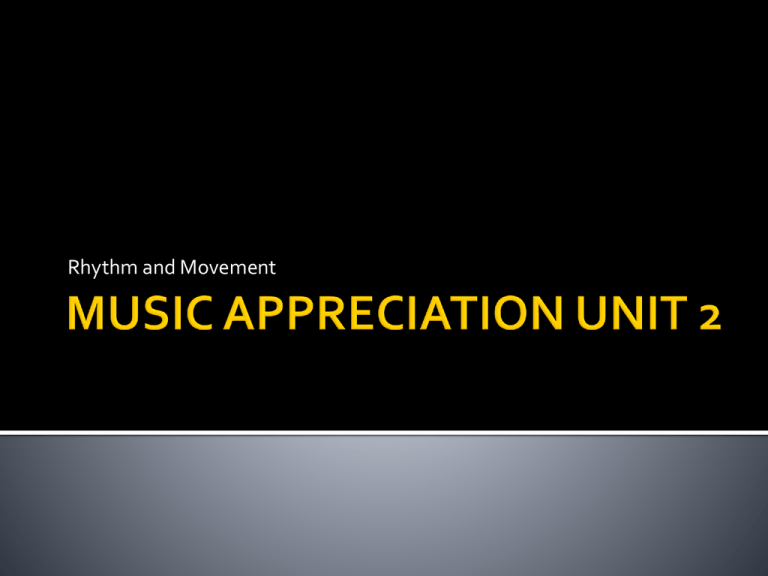
Rhythm and Movement Objective – Without looking at a watch, try to determine which piece is longer (1) Adagio for Strings by Samuel Barber (2) “Bandinerie” from Orchestral Suite No. 2 by J.S. Bach Decide which words below describe the music and list them in your notebook Slow Calm Spirited Questions hurried detached short sounds strong pulse tension repose (rest) fast weak pulse smooth sounds 1. Which of these words or “descriptors” characterize both selections? 2. Which piece seems longer? 3. Discuss how your choice of words reflect the sense of “felt” time embodied by the music. “Felt” time – the space music appears to carve out for itself Rhythm – the way music paces itself and moves through time Music exits in time, unlike other art forms How long can you stare at a painting, sculpture or building? How long can you listen to a piece of music? Can you add or subtract notes as the listener? Music exists in time, and the way we organize that time is called rhythm Do any other art forms exist in time (that is, have a beginning, a middle and an end)? Tempo – the speed of the music In music, tempo terms are in Italian, because Italian composers were the first to use them Terms – Largo – very slow Adagio – slow Andante – moderately slow Allegretto - moderately fast Allegro – fast Presto – very fast Accelerando – gradually getting faster Ritardando – gradually getting slower A tempo – returning to the previous rate of speed Listen to the five situations read by Mr. Scollick Select what you think would be an appropriate tempo marking to describe the pace of each situation Use the Italian term! Number your notebook from 1 – 6 Listen to the musical selection and assign an appropriate tempo term in Italian. Listen again and match the title with the music. Consider (1) the title (verbal clue) (2) tempo (3) style of the music (4) possible uses of the music Choose from the titles below “Trio” from Pomp and Circumstance No. 1 by Elgar “Little Train of the Caipira” from Bachianas Brasileiras by Hietor Villa-Lobos “Cripple Creek” (American Folk Dance) “Ase’s Death” from Peer Gynt Suite No. 1 by Grieg “Flight of the Bumblebee” from Tsar Sultan by Rimsky-Korsakov “The String’s of God’s Lute Are in My Body” (Islamic Music from Pakistan) You may choose to do either 1. Create a title and one-page story line for an imaginary film that would use either the Adagio for Strings or “Bandinerie” as the musical soundtrack. It should be like a minute-long radio advertisement for the film. Be ready to share with the class 2. Create a film soundtrack by selecting music that would express two of the five situations we did in class. Decide how music can best express the pace of each situation. Include dynamics (loud/soft) to reinforce the expression. You may choose any style of music. Record the music and bring to class. Be ready to share with the class. ▪ ▪ ▪ ▪ ▪ 1. Track Competition (Presto) 2. Principal’s Office (Largo) 3. Graduation Practice (Andante) 4. Speed down hall, stop, speed down again (a tempo) 5. Driver’s test (Accelerando/Ritardando) While listening to the musical selection, count out loud from one to eight Next, while counting out loud, perform the following First 8 beats: Snap fingers on each beat Second 8 beats: Snap 7 beats, clap 1 beat Third 8 beats: Snap 6 beats, clap 2 beats Fourth 8 beats: Snap 5 beats, clap 3 beats Continue until you clap on all 8 beats Now repeat the sequence without counting out loud and only performing the claps! Accent- emphasis placed on a beat Count 8 beats evenly and perform the following patterns by clapping on the “X” and snapping on the “o” accents.xlsx Meter- beats organized into a regular group Two kinds of meter Duple meter – organizes two beats DupleMeter.xlsx Triple meter – organizes three beats Triple Meter.xlsx As you listen to “Procession of the Nobles” by Rimsky-Korsakov, try to clap the meter as it changes between two and three. What is the order of the meters in this music? Musicians have to learn to keep more than one rhythm going at a time Try patting your head and rubbing your stomach at the same time Try to imitate the skills of a fine drum set player 1. Listen to the recording and establish the accent on beat 1.Tap this accent with your left foot every time you hear it 2. While tapping with your left foot, use your left hand to tap regular pulses of four. Tap these four even beats on your desk. Emphasize the first beat. 3. While you continue to tap your foot on beat 1 and use your left hand for pulses, use your right hand to double the speed of your left hand so you are playing eight even beats. Use your pen/pencil as a drumstick, holding it lightly as you tap these beats on your desk. Do not speed up! Drum set pattern.mscz.pdf India is the world’s largest democracy (over 1 billion in population) Host to 14 languages and five religions Music is as varied as the people Typical Indian instruments Strings such as sitar, sarangi, vina and tambura Pair of drums called tabla Indian music is not organized into patterns of two, three or four as in Western music Instead, Indian musicians use a rhythm cycle Rhythm cycle is a fixed number of beats in a series that repeats itself over and over Cycles can be anywhere from 7 to 104 beats! Tintal – a 16 beat cycle From Hindi – “tin” – three and “tal” - clap As you count beats 1 through 16, mark the groups of beats with the following movements of your hands and fingers 1. Clap beat one bringing your right hand down onto your up-turned left palm 2. Mark beats 2, 3 and 4 by bringing the fifth, fourth and third fingers of your right hand , one after another onto your left palm 3. Repeats steps 1 and 2 for beats 5 through 8 4. Use a small hand wave rather than a clap on beat 9 and continue with fingers on beats 10, 11, and 12 5. Repeat clap and fingers for beats 13, 14, 15, and 15 6. Begin the pattern all over again Practice the Adi tal cycle of eight beats Adi tal.xlsx If music were a steady progression of beats and regular accents, it would be boring Syncopation – Accents placed on beats not normally accented in a meter Regular Accents.xlsx Syncopation.xlsx Listen to Scott Joplin’s “Maple Leaf Rag” Maple Leaf Rag.pdf Polyrhythms are two or more independent rhythms sounding togther Unlike syncopation, the rhythms appear to have different meters such as one duple and another triple Polyrhythm.xlsx Many musicians can listen to a rhythm and write it down This is a skill that can be learned Using the 8-beat measure, first practice the rhythm you hear by clapping it back Circle the numbers on your worksheet (1-8) on which a sound is heard

